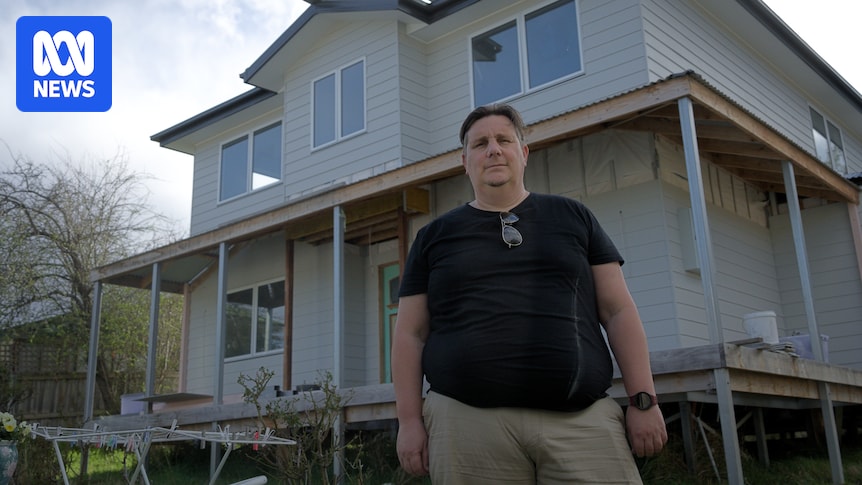
Matthew Mapley’s vision of owning a dream home turned into a nightmare when he discovered his signature on a document he claims he never signed. The bank had paid for construction work that remained incomplete, and his builder declared bankruptcy. The scene at the abandoned construction site in Hobart is desolate, with yellow grass sprouting through the unfinished deck and sunlight streaming through gaps in the incomplete roof.
The builder, Swan Homes Tasmania, collapsed approximately a year ago. In a report to creditors, the liquidators revealed that the company was likely insolvent just eight months after its inception, and four months before signing a $570,000 contract with the Mapleys. Former director Leigh Swan attributed the company’s downfall to “extreme financial hardship,” exacerbated by the COVID-19 pandemic.
Unraveling the Mystery of the Signature
By May 2023, construction was lagging, prompting Mr. Mapley to anticipate a call from his bank’s valuer for an on-site assessment before releasing funds to the builder. However, the call never came. Upon reviewing his bank account, Mr. Mapley discovered a progress payment of $113,885 had been made to the builder without his on-site meeting with the valuer.
When he questioned the payment, Tasmanian bank MyState informed him they had documentation authorizing the drawdown on his construction loan, complete with his signature. An investigation revealed that Mr. Mapley’s and his wife’s signatures were “exactly the same” on three payment forms, though the rest of the writing varied. The bank advised Mr. Mapley to contact his broker.
“I never signed this,” Mr. Mapley asserted, questioning why MyState paid for incomplete works.
MyState claimed their valuer, Opteon Property Group, conducted an inspection and confirmed the required works were done. However, more than a year later, the site still shows unfinished elements, such as unsealed French doors and incomplete roofing.
Broker’s Role Under Scrutiny
Mr. Mapley’s wife reached out to Lendi Group, the owner of Aussie Home Loans where their broker Angela Donovan worked, about the signature discrepancies. Lendi stated that the broker had a verbal agreement with the Mapleys to reuse their signatures for convenience. Ms. Donovan claimed she offered to use the first drawdown form’s signature to save the Mapleys from repeated office visits.
Mr. Mapley disputed this account, stating, “That conversation definitely didn’t happen.” He acknowledged forwarding invoices to Ms. Donovan but was unaware he needed to sign progress payment forms each time.
“Every signature must be obtained for every document, every time,” Lendi emphasized, acknowledging the broker did not follow their strict signature process.
Ms. Donovan left the business during an internal investigation, and the Mortgage and Finance Association of Australia (MFAA) suspended her membership, though she claimed the suspension was unrelated to the Mapleys’ allegations.
Legal and Financial Implications
Tasmanian barrister Cameron Scott noted that while the state’s criminal code allows for documents to be signed on someone’s behalf, best practices dictate a written instruction permitting it. MyState has not indicated any plans to compensate Mr. Mapley, though they are working with the couple to complete the build.
Builder Leigh Swan contended that incorrect materials supplied by the Mapleys’ chosen supplier delayed the project. He claimed to have personally funded some materials and even covered the Mapley family’s rent to alleviate their hardship.
“Hundreds of small builders have collapsed under the same pressures,” Mr. Swan stated, highlighting the broader issue of insufficient government intervention during the price inflation crisis.
With construction insolvencies tripling since 2021-22, according to the Australian Securities and Investments Commission (ASIC), the construction industry faces significant challenges. Mr. Mapley estimates an additional $200,000 is needed to complete the build and is awaiting MyState’s approval to borrow $117,000 to move forward.
As the Mapleys navigate this complex situation, the case underscores the importance of stringent financial controls and transparent communication between homeowners, builders, and financial institutions.







